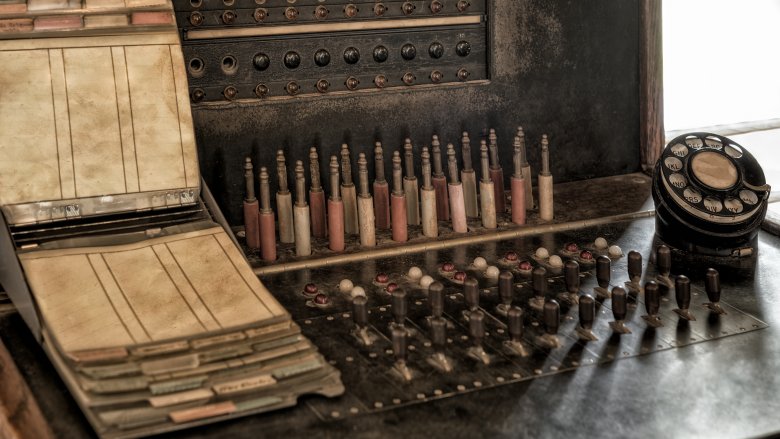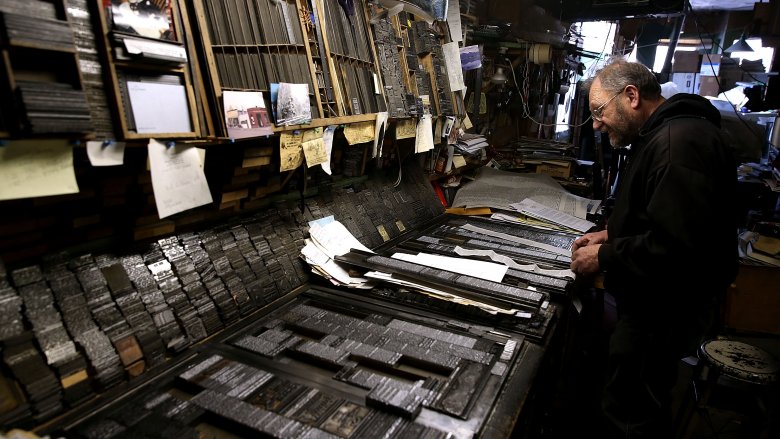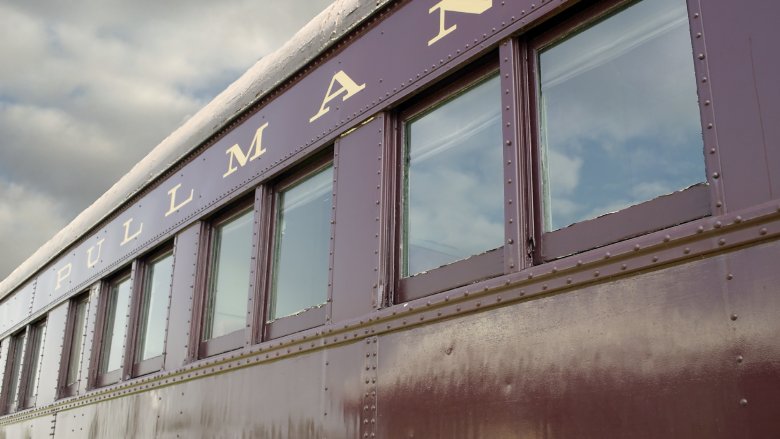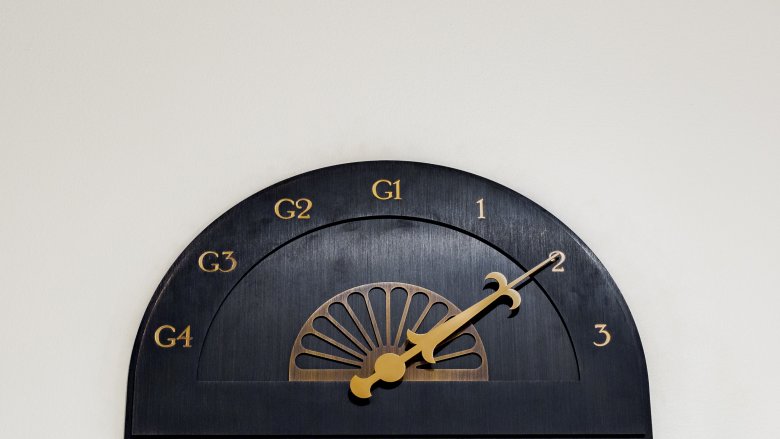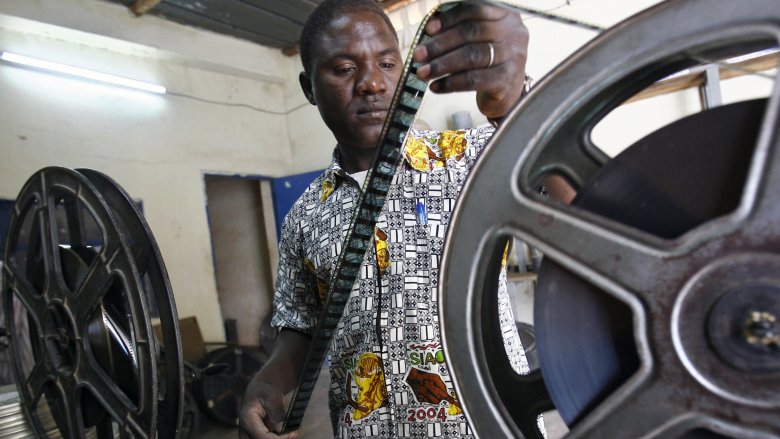Jobs From 50 Years Ago That No Longer Exist
"Listen, you little whippersnapper, back when I was your age, I marched 10 miles every morning to break my back for a living!"
Okay, so it's annoying when your grandpa shouts this every Thanksgiving, but he isn't exaggerating (much). As science and technology have shot forward like speeding bullets, the job market has evolved in leaps and bounds, resulting in yesterday's lucrative career paths becoming today's unimaginable chores. On one hand, it's scary to think about all the jobs automation will swallow up in 10 years. But on the other, would you really want to do a bunch of dangerous or tedious or utterly mind-numbing grunt work? Didn't think so. Back when Gen X was in diapers and the baby boomers were learning to spell, their parents were slaving away at jobs that are now more extinct than the velociraptor.
Come hell or high water
If balancing atop giant floating logs, riding them down a roaring river for hours, and earning $1 an hour sounds like your idea of a good time, you would've loved log driving. For decades, the paper industry depended on log driving as a method for transporting wood, particularly up in Maine. That's also where the final log drive occurred, according to the New York Times, in 1976.
What ended log driving? For one, the growing demand for wood made it a lot more rational to transport logs in trucks, which could run year-round, instead of riding along the water like a boat. The death of log driving was also hastened by environmental concerns, according to the Portland Press Herald, as bark pollution from the log drives was wiping out the Kennebec River's trout population. Furthermore, filling up the river with giant logs made life really difficult for fisherman, canoes, casual swimmers, or anyone else wanting to enjoy a boat ride.
Hey, somebody's gotta train those war pigeons
You have to hand it to those ravens in Game of Thrones, who somehow deliver letters all over Westeros while rarely getting shot down. In real life, the closest equivalent were carrier pigeons, which really did deliver messages across vast distances, though not with the same supernatural reliability. Surprisingly enough, the U.S. Navy still had a fleet of carrier pigeons as recently as 1961, according to USNI News, which were used as a backup communication line in case some disaster took out the radio. Since pigeons aren't genetically predisposed to deliver notes for hairless monkeys, the Navy had to employ military pigeon trainers, or professional "pigeoneers."
While the Vietnam years marked the end of U.S. pigeoneers, other countries kept the profession going for a while longer. In fact, it wasn't until 1996 that the world's last war pigeon force was disbanded, according to the Associated Press. The final holdout? Switzerland, and it didn't happen easily: At least 100,000 people signed a petition trying to get the carrier pigeon service placed into the Swiss constitution. The petition was unsuccessful, and the last war pigeons flew into retirement.
'Hello, operator?'
Humans still haven't walked on Mars, but in the last century, the humble telephone has transformed so much that today's wacky, touchscreen sci-fi devices only resemble their ancestors in that they (mostly) fit in your hand. The weirdest change, though, might be the fact that back when phones were new, you didn't directly call people: You picked up the device, talked to an operator, and that operator routed your call using a manual switchboard. You could even chat with the operators, if you liked. For generations raised on text messages and Skype, such a slow process is hard to imagine, but that's just how things were.
Mental Floss says the switchover to "dial" telephones — you know, where you dial your own numbers — started in 1919 and was mainstream by the 1950s. However, a surprising number of less populated, more rural cities were still employing operators as late as the 1970s, and the Los Angeles Times points out that the last manual switchboard in California was replaced in 1991, the era of Nirvana and Microsoft Windows. At this point, any remaining operators moved to using computerized equipment. According to the New York Times, many of those remaining operator jobs didn't last long.
Back when 'computers' were people
When you hear the word "computer," you probably envision a machine. Once upon a time, though, computer was actually a job title — and according to Curiosity, most computers were women.
Pocket calculators weren't yet a thing, and that meant complex mathematical puzzles (such as determining rocket paths, thrust-to-weight ratios, or other things that would traumatize your grade school self) had to be solved with a paper and pen. History says the math done by this army of female thinkers forged many of the 20th century's greatest scientific achievements, particularly those of NASA. They earned a decent wage, as well, pocketing the equivalent of $50,000 a year, according to Mercer. By the 1970s, though, the tide had changed. Computers were replaced by ... well, computers of the mechanical variety. Nobody trusted these weird devices at first, but once they took over, human computers were out of a job. Nonetheless, while the services of human computers are rarely mentioned today, they deserve huge credit for building the world everyone lives in.
The Linotype days of yore
Remember those scenes in Steven Spielberg's The Post, where newspapers are pounded out, letter by letter, with industrial machines and hot lead? As the Los Angeles Times points out, that's really how it used to be done, and these Linotype machines — the name seems to have evolved from "line o' type" — were way cooler than today's printers. Linotype was first invented in the 1800s by a German immigrant named Ottmar Mergenthaler, according to the Atlantic, and Thomas Edison was allegedly so impressed that he hailed the new technology as the "eighth wonder of the world." For decades afterward, Linotype powered newspapers across the nation, and the so-called typesetters who operated these machines were the rock stars of the printing press. Typists made a decent living, traveled around, and were reportedly heavy drinkers, according to a self-proclaimed typist who wrote about his profession for a 1979 Texas Monthly article. Hey, he said it.
Unfortunately for these guys, the whole profession came crashing down with the invention of easy-peasy computerized phototypesetting. Linotype was pronounced dead by the New York Times in 1986. That same year, Adobe memorialized the deceased world wonder with the invention of a font named Linotype Centennial.
The long legacy of the Pullman porters
The U.S. Civil War mostly ended slavery, but as soldiers went home, a newly freed black population struggled to find paying jobs. Meanwhile, according to the Smithsonian, an industrialist named George Pullman wanted to popularize his new brand of luxury sleeper trains. Pullman decided to keep his costs down by hiring ex-slaves to be his passenger attendants. These Pullman porters, as they were called, were assigned to shine shoes, make beds, and other demeaning tasks while earning very little money. They were also forced to answer to their employer's name, "George," a remnant of slavery that implied Pullman was their master. However, these workers took a raw deal and tried to make change. Pullman porters used their job to travel, to form a line of communication with America's aristocracy, and to become figureheads within their local communities. When the poor payment and mistreatment got bad enough, the Pullman porters made history in 1925 by forming a union to demand better working conditions. This underdog group challenged the corporation that hired them, won their case, and paved the way for the Civil Rights movement.
According to the Christian Science Monitor, many notable figures like Malcolm X and Thurgood Marshall worked as Pullman porters in their youth. By 1969, though, the luxury train travel industry lost steam, and the Meriden Journal reported that the Pullman porter workforce had dropped from 2,300 to only 325 men. Today, history remembers these workers for their tenacity, their defiance, and their strength in the face of prejudice.
Elevators weren't always so easy
It seems like every time someone loses their job, they blame machines. Former elevator operators, though, have a pretty strong case for this argument, according to Harvard economist James Besson. After all, who needs a human being when you can simply press a button?
These days, everybody takes it for granted that elevators will stop perfectly level on their desired floor, but an old New York Times piece by former operator Andre Lecursi points out that elevator skills used to be more art than science, requiring a warm smile and a smooth hand. Jerking a bunch of levers and ensuring a non-jiggly ride was hard work, particularly since operators were also expected to entertain their passengers, manually open and close the doors, and memorize each floor. Customer service at its finest, for sure. If you dig hard enough you might find a manual elevator still around, but as a normal profession, elevator operators are a thing of the past.
Deliver that telegram, sonny!
If you think text messaging is cool, don't forget to thank that technology's great grandfather: the telegram. For kids in the audience, telegrams were printed messages, sent from far away through an electrical telegraph, and then delivered by a teenager in an olive green uniform. Basically, imagine a cross between snail mail and email, minus the internet. According to the Telegraph (no pun intended), telegram boys were almost always young men who mounted either bicycles, mopeds, or motorcycles to bring these faraway messages right to your doorstep. So if you were wondering whether your Uncle Phil had survived the war, a telegram was the fastest way to get the news.
Though the New York Times reports that telegram deliveries numbered near 200 million back in 1929, the next few decades saw telegrams get destroyed by their slick new competitor, the dial telephone. By 1968, the legendary squads of green-suited boys were dismissed. Over in the U.K., though, telegram boys continued spinning their wheels up through the 1970s, according to the Falmouth Packet.
A 'reel' change
Tyler Durden's malignant pranks made the job of a movie theater projectionist look like the ultimate student dream job, but according to CNET, the actual profession was a lot more complex. Before digital projectors arrived on the scene, their 35 mm predecessors required skilled projectionists to lace up the projectors, splice in trailers, and make sure film was carefully secured on the platter — or it might spill out, which would end the movie, piss off everyone in the theater, and require the projectionist to spend the entire night untangling everything. Yikes.
By the 2010s, though, most theaters replaced film projectors with digital ones, and these new devices automatically did almost everything humans used to do. Movie theater projectionists still existed, but what was once a skilled career became a casual maintenance exercise. According to the Telegraph, many actual filmmakers aren't too happy about this switchover, arguing that 35 mm film carries a lot more color, vibrancy, and texture than digital photography. Furthermore, as famed director Christopher Nolan points out, the switchover to digital is mainly just because movie theaters don't want to spend money training and paying seasoned film projectionists. But whatever dollars theaters have saved by dropping these workers certainly hasn't been passed to customers, as movie ticket prices have continued rising, according to Box Office Mojo.
The perfect job for tea snobs
Sometimes your job gets replaced by a machine. Sometimes, changing cultural standards render it outdated. And sometimes, the majority of the population thinks your job is so ridiculous that they spend decades trying to kick you out.
People will debate the proper role of government intervention for years to come, but most people can agree that the U.S. federal government doesn't need an entire branch dedicated to drinking tea. Bizarrely enough, the Board of Tea Examiners existed as a federal entity from 1897 to the end of the 20th century, funded by over $250,000 a year, according to the New York Times. This seven-person operation was designated with the sacred duty of ... uh, taste-testing every tea that was imported into the United States to make sure the quality was high enough for the oh-so-fine American palette. No, this isn't a joke. Naturally, giant tea corporations like Lipton loved these federal tea workers, since it meant the government paid to have their tea tasted. Presidential administrations ranging from Richard Nixon to Jimmy Carter tried to kick these tea workers to the curb, it wasn't until the Clinton years that the New York Times reported that the Senate had successfully disbanded the Board of Tea Examiners, with no debate. Considering that over 20 years have passed, it seems like the tea industry survived the change.



